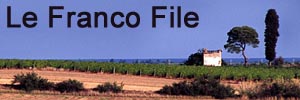Our original plan was to travel a bit further towards Wellington today but the site we’d targeted was coastal and advertised itself with photographs of smiling children. Weekend, child friendly … no, maybe not. It’s about 300kms to Wellington so reasonable in one hit down main roads. The fact that there is some interest here in Ohakune made us decide to have a day off and book in for a second night.
It’s decidedly cool [11°C] and blowing a bit of a hoolie, so maybe we should’ve gone on. No matter, we’re here and exploring.
 First stop, an overlook to a so-called railway spiral that rises 200m. Off we drove. When we got there and climbed the observation tower, what we were looking at was a model representation of the spiral, complete with two tunnels, on a tall pole. I was both bemused and amused. Was this a joke? It seemed not. In the distance on a hillside there was just about visible some evidence of a rail line, a cutting through some trees, but one certainly could not see any vestige of a railway line itself, far less a spiral. Another coup for the NZ Travel Board.
First stop, an overlook to a so-called railway spiral that rises 200m. Off we drove. When we got there and climbed the observation tower, what we were looking at was a model representation of the spiral, complete with two tunnels, on a tall pole. I was both bemused and amused. Was this a joke? It seemed not. In the distance on a hillside there was just about visible some evidence of a rail line, a cutting through some trees, but one certainly could not see any vestige of a railway line itself, far less a spiral. Another coup for the NZ Travel Board.
 The railway spiral (not) was a lucky stop, however. There was a stream tumbling near the bus (which seems to have been tagged Busby). Our timing was fortuitous because the sun put in a rare appearance. At first I saw nothing and had just finished saying, “nobody home”, when I spotted a single instance of my fourth New Zealand odo, Austrolestes colensonis. I’d actually seen a tandem pair at the manmade rapids a day or so ago but I’d failed on the picture front. Now getting a decent picture of it made my day and certainly made up for the disappointment of the railway spiral.
The railway spiral (not) was a lucky stop, however. There was a stream tumbling near the bus (which seems to have been tagged Busby). Our timing was fortuitous because the sun put in a rare appearance. At first I saw nothing and had just finished saying, “nobody home”, when I spotted a single instance of my fourth New Zealand odo, Austrolestes colensonis. I’d actually seen a tandem pair at the manmade rapids a day or so ago but I’d failed on the picture front. Now getting a decent picture of it made my day and certainly made up for the disappointment of the railway spiral.
I learned something else. At one point yesterday, Kiwi Satnav had instructed me to “turn towards national park”. I’d assumed there was a national park along said road. Not so; I now see that there was a village called National Park along said road. We had now driven through the oddly named National Park. Blink and you’d miss it. We turned towards Whakapapa – you have to write it, you can’t say it – to look for a walk that didn’t actually exist. Whakapapa sits beneath the tallest of the snow-covered volcanoes. The volcano seems to generate its own weather, as mountains tend to do, and its weather today was cool and very windy.

 We beat a hasty retreat back to Ohakune where there was a forest walk that did exist. With a side excursion, the walk was about 1½ hours and the track through what often felt like primordial forest was very well done indeed. New Zealand could well have been named Fernland, given the amount and rich variety of ferns here. We’d seen a thick book detailing just ferns. Towards the end of the walk we came across another example of a Greenhood Orchid, so we were both happy campers.
We beat a hasty retreat back to Ohakune where there was a forest walk that did exist. With a side excursion, the walk was about 1½ hours and the track through what often felt like primordial forest was very well done indeed. New Zealand could well have been named Fernland, given the amount and rich variety of ferns here. We’d seen a thick book detailing just ferns. Towards the end of the walk we came across another example of a Greenhood Orchid, so we were both happy campers.
Happy campers but cool campers. Time to try the heating in Busby. Brrr!



























Recent Comments